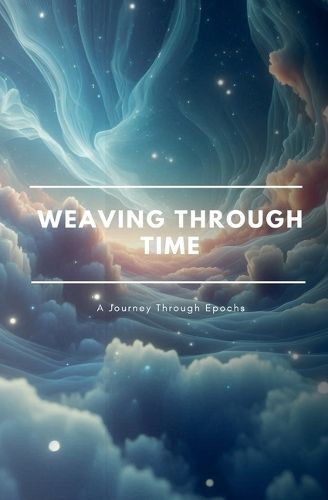Readings Newsletter
Become a Readings Member to make your shopping experience even easier.
Sign in or sign up for free!
You’re not far away from qualifying for FREE standard shipping within Australia
You’ve qualified for FREE standard shipping within Australia
The cart is loading…






Weaving Through Time
Quantum physics has fundamentally reshaped our comprehension of time, challenging the classical view of a linear and absolute progression. In the classical framework, time flows uniformly, an unyielding river carrying events forward. Yet, with the emergence of quantum mechanics, this once-solid foundation has fractured, revealing a realm where time behaves in ways both baffling and intriguing.
Einstein's theory of relativity first hinted at time's elasticity, showing it could stretch and compress depending on speed and gravity. However, quantum mechanics pushes these boundaries further, proposing that time might not be a single unfolding path but a manifold of potentialities and probabilities. This nuanced view alters our perception of causality and sequence, suggesting that events may not unfold along a fixed trajectory but rather as a spectrum of possibilities waiting to be realized.
Central to this quantum enigma are concepts like superposition and entanglement. Superposition allows particles to occupy multiple states simultaneously until observed, echoing Schroedinger's famous cat paradox, where the feline exists both alive and dead until the box is opened. Applied to time, this implies that until an observation or measurement fixes a state, events exist in a haze of potential timelines, weaving a tapestry of possibilities rather than a singular thread of reality.
$9.00 standard shipping within Australia
FREE standard shipping within Australia for orders over $100.00
Express & International shipping calculated at checkout
Weaving Through Time
Quantum physics has fundamentally reshaped our comprehension of time, challenging the classical view of a linear and absolute progression. In the classical framework, time flows uniformly, an unyielding river carrying events forward. Yet, with the emergence of quantum mechanics, this once-solid foundation has fractured, revealing a realm where time behaves in ways both baffling and intriguing.
Einstein's theory of relativity first hinted at time's elasticity, showing it could stretch and compress depending on speed and gravity. However, quantum mechanics pushes these boundaries further, proposing that time might not be a single unfolding path but a manifold of potentialities and probabilities. This nuanced view alters our perception of causality and sequence, suggesting that events may not unfold along a fixed trajectory but rather as a spectrum of possibilities waiting to be realized.
Central to this quantum enigma are concepts like superposition and entanglement. Superposition allows particles to occupy multiple states simultaneously until observed, echoing Schroedinger's famous cat paradox, where the feline exists both alive and dead until the box is opened. Applied to time, this implies that until an observation or measurement fixes a state, events exist in a haze of potential timelines, weaving a tapestry of possibilities rather than a singular thread of reality.